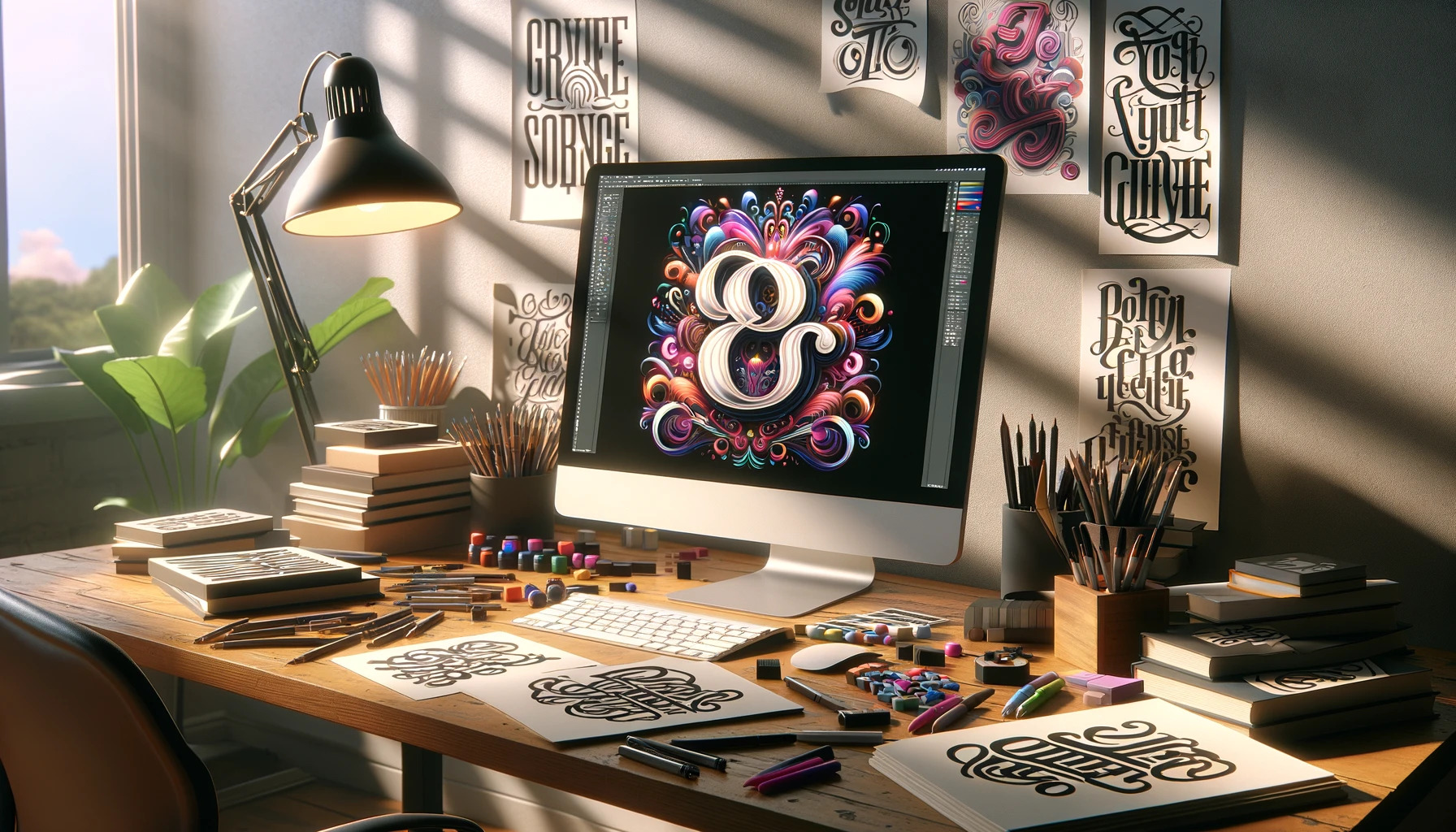Exploring Typography in SVG: A Detailed Guide
By Roberto
Published April 1, 2024
 Exploring Typography in SVG: A Detailed Guide
Exploring Typography in SVG: A Detailed Guide
Typography in SVG (Scalable Vector Graphics) offers a unique blend of design flexibility and technical control, enabling designers to create highly customizable and scalable text elements within their graphics. This guide dives deep into the nuances of SVG typography, revealing how to leverage its potential to enhance your designs.
Understanding SVG Text Basics
To harness the full power of SVG typography, a solid grasp of the basics is essential.
- Text Elements: The
<text> element in SVG is the cornerstone of adding textual content. It supports various attributes to adjust the position, orientation, and styling of your text. - Text Paths: For more dynamic text presentation, SVG allows text to follow a defined path using the
<textPath> element. This technique is perfect for creating curved or angled text in designs.
When crafting text elements, adhering to SVG design principles ensures that your typography not only looks visually appealing but also aligns with the best practices of scalable vector graphics.
Styling Text in SVG
SVG offers extensive styling options that rival CSS's capabilities in HTML. Here’s how you can style your SVG text for maximum impact.
- Font Selection: Use the
font-family attribute to specify the typeface. SVG supports web-safe fonts and custom fonts defined through @font-face in CSS. - Font Size and Weight: Control the appearance of your text with
font-size and font-weight attributes, allowing for precise adjustments to fit your design. - Fill and Stroke: Beyond the font itself, SVG text can be filled with color (
fill attribute) or outlined (stroke attribute), including gradient fills and patterned strokes for creative effects.
Effective typography is pivotal in user interface design with SVG, where clarity, legibility, and visual hierarchy play critical roles in enhancing user experience.
Advanced Typography Techniques
Diving deeper, SVG typography encompasses advanced techniques that empower designers to craft visually captivating and technically sophisticated graphics.
- Text on a Path: Beyond merely flowing text along a path, you can manipulate its start position, alignment, and spacing for intricate text effects.
- Responsive Typography: Leveraging SVG's scalability, you can create responsive text that adjusts to the viewer's screen size, ensuring your designs look great on any device.
- Multiline Text: While SVG doesn’t directly support multiline text, the
<tspan> element allows for line breaks and fine-tuned control over each line segment, offering a workaround for creating block paragraphs or adjusted line spacing.
Beyond text, advanced typography techniques in SVG pave the way for innovative SVG icon design, where typographic elements are seamlessly integrated with icons for a cohesive visual language.
Typography Animation with SVG
Animation adds a dynamic dimension to SVG typography, making text not just a static element but a lively part of your design.
- Simple Animations: Start with CSS animations or SMIL (Synchronized Multimedia Integration Language) for basic text effects like fading in or sliding.
- Complex Animations: For more complex animations, such as text morphing or letter-by-letter animation, JavaScript libraries like GSAP (GreenSock Animation Platform) provide powerful tools to animate SVG elements with precision.
Best Practices for SVG Typography
To ensure your SVG typography is not only visually appealing but also functional and accessible, follow these best practices.
- Accessibility: Always include text alternatives for your SVG graphics, using the
<title> and <desc> elements within your SVG markup to describe the graphic and its textual content. - Optimization: SVG files can become bloated with excessive details or metadata. Tools like SVGO (SVG Optimizer) can help reduce file size without sacrificing quality, ensuring faster load times.
- Cross-Browser Compatibility: Test your SVG typography across different browsers and devices. While SVG is widely supported, discrepancies in rendering can occur, especially with more complex features or animations.
Maintaining consistency and clarity in typography across different platforms and devices is paramount in branding with SVG. SVG's scalability ensures that your brand's visual identity remains intact, no matter the medium.
Innovative Use Cases for SVG Typography
Exploring creative applications of SVG typography can inspire unique design solutions.
- Interactive Infographics: Combine SVG's interactivity with typography to create engaging infographics where text plays a key role in the storytelling.
- Branding and Logos: SVG’s scalability makes it perfect for logo design, allowing brands to maintain crisp, clear typography across various mediums.
- Artistic Text Effects: Push the boundaries by experimenting with distorted text paths, pattern fills, or animated typographic landscapes, opening new avenues for artistic expression.
Conclusion
Typography in SVG marries the art of visual design with the precision of vector graphics, offering a playground of possibilities for designers willing to explore its depths. By mastering the fundamentals and experimenting with advanced techniques, you can elevate your designs, ensuring they are not only visually striking but also technically robust and responsive. Remember, the key to unlocking SVG typography's full potential lies in creativity, experimentation, and adherence to best practices. Embrace the versatility of SVG to make your typographic designs stand out in the digital landscape.